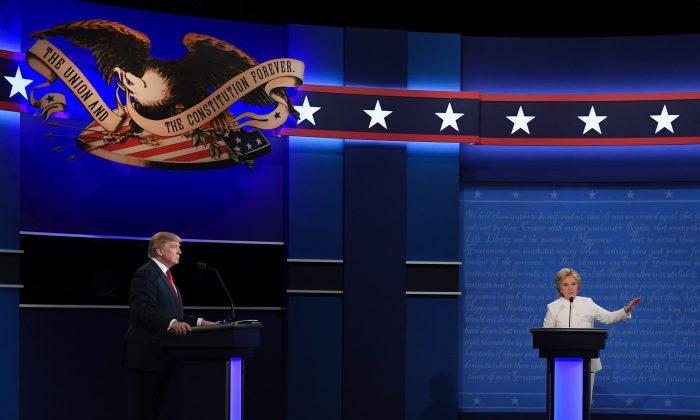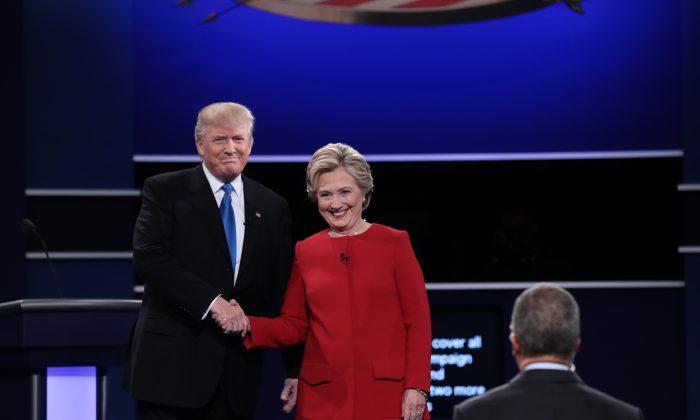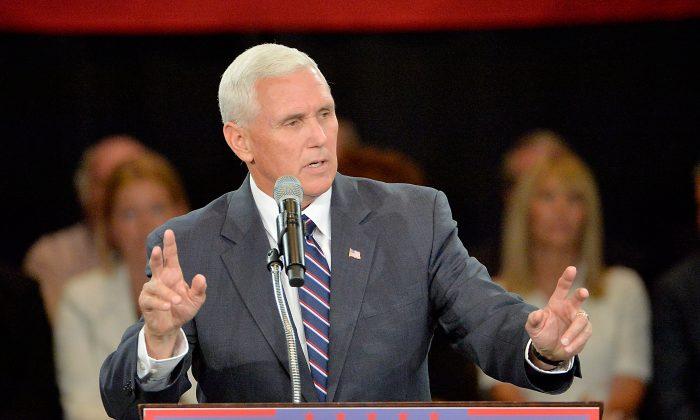For years Democrats have quietly dreamed of turning the Lone Star State blue in a presidential election. Few, however, would have expected Texas to become competitive this soon.
Newly released polls show that Democratic candidate Hillary Clinton has come within a 3 percent reach of Republican candidate Donald Trump in Texas. The results have been so close that poll aggregator RealClearPolitics changed the status of the state from being a definite Republican win to being a toss-up state.
In 2012, Republican candidate Mitt Romney carried the state over Barack Obama by a 16 percent margin.
There were signs, even in 2012, that the state could flip. Obama carried all four of Texas’s major cities—Houston, Dallas, San Antonio, and Austin—along with the border counties in the south.
Those cities and border counties only made up 20 percent of the state and were greatly outweighed by the rural parts of the state.
Looking further back into the state’s voting history, Bill Clinton came within 4 percent of winning the state against home state incumbent George H.W. Bush in 1992—40.5 percent to 37 percent—helped along by Independent candidate and Texas billionaire Ross Perot, who won 22 percent of the vote.
Changing Demographics
Democrats see an opportunity in the rising Hispanic population in cities like San Antonio to flip the state to blue.
In counties like Fort Bend, Texas, there was a population explosion between 2010 and 2015. The population in Fort Bend County increased from 584,832 in April 2010 to 716,087 in July 2015—a 22.4 percent increase—according to census data. It also shows an uptick in the number of Hispanics and Asians eligible to vote.
Overall, the population in the state increased from about 25.1 million to 27.5 million people between 2010 and 2015. The white population in the state decreased by 2.3 percent, from 45.3 to 43 percent, and the Hispanic population increased by 1.4 percent, from 37.6 to 38.8 percent.
Steve Murdock, sociologist and former director of the U.S. Census Bureau, says these demographic changes are projected to have long-term effects for the state.
“Texas is already a majority minority state, and by 2020 the Hispanic population is projected to exceed the non-Hispanic white population,” Murdock wrote in an email.
“Projections for 2050 indicate that the Texas non-Hispanic white population could be only 21.8 percent of the total population, while the Hispanic population would account for 55.6 percent of the total population by 2050,” he wrote.
Trump has consistently trailed Hillary Clinton by over 30 percent with Hispanic voters, and recent reports of a surge in Latino registration and a high turnout for early voting in the state—which started on Oct. 24—has increased hope for the Democratic Party.
Cal Jillson, professor of political science at Southern Methodist University, pushed back against inferences that a Democrat could win the state simply because of shifting demographics.
Jillson cited that only about 19 percent of the state’s Hispanic voters came out to vote in 2012.
In addition, Hispanics in Texas are “10 percent more conservative than other Hispanics in, say, California,” he said, noting that California Hispanics vote Democrat 70-30 percent, whereas in Texas that ratio is about 65-35 percent.
So far, the Clinton campaign has not campaigned in Texas, instead focusing on other Republican strongholds like Arizona and Georgia.
Texas’s 38 electoral votes—the second largest state in terms of electoral votes after California’s 55 votes—are essential for Republicans in presidential elections to get to the 270 votes in the electoral college needed to win the presidency.
When it comes to down-ballot races, eight state Senate seats currently held by Republicans are up for election this fall in Texas. Democrats didn’t even field a candidate in six of them. In the remaining two races, it would take a huge upset for Democrats to win.



